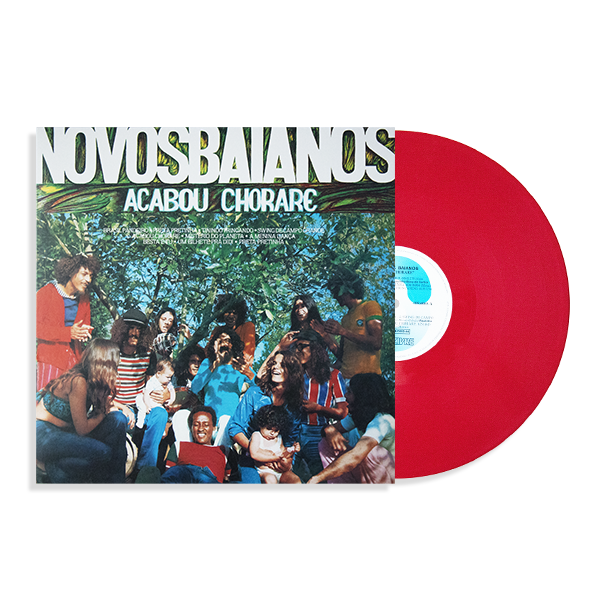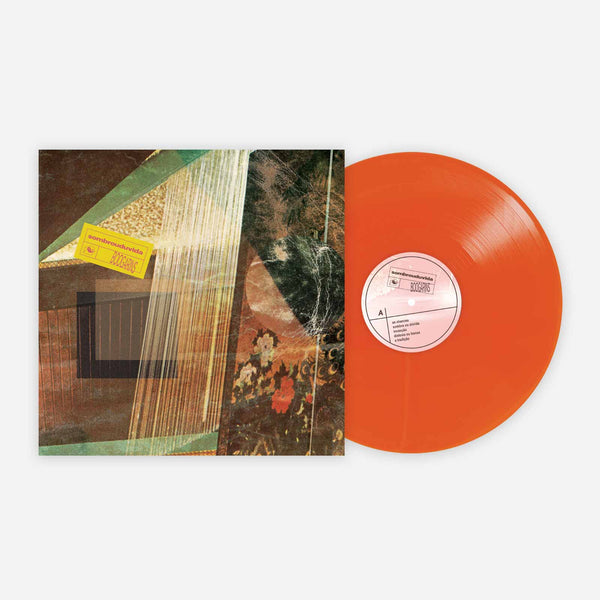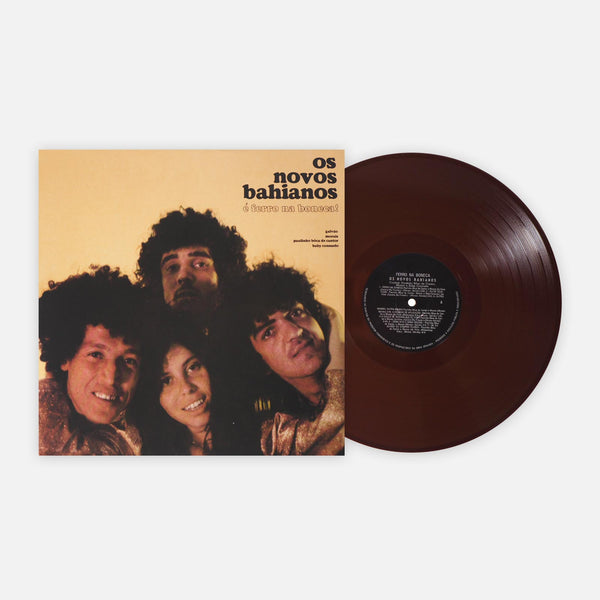Melacak evolusi samba-rock di São Paulo
We Explore Brazil’s Vivacious Dance Movement And How It Came To Be
If picturing hip-hop, big bands and samba playing at the same party sounds too odd, you’ll definitely be surprised by samba-rock, an authentic musical expression from São Paulo’s black communities.
Probably one of those genres you have never heard of (actually, many Brazilians outside São Paulo haven’t either), samba-rock arose from the encounter between the most popular black rhythms from Brazil and the U.S. Although it was only in the 1970s that samba-rock became a “thing,” its roots go back to the late 1950s, when rock music started to spread across the world.
From the 1950s on, rock music ruled over Brazil’s dance halls. Keeping up with the latest trends on the radio, the ghettos of São Paulo soon became hypnotized by American black music. Along with samba and bolero, the sound of blues, jazz and rock music were essential to every party at the time. Bill Haley and Johnny Rivers were some of the favorites to dance to at weddings, birthdays and family gatherings.
Samba-rock was first born as a dance style due to the dynamic through which the disco culture evolved in São Paulo. Although most black parties started as small family gatherings in a relative’s backyard, they soon became bigger and moved to commercial venues. As the parties started to attract more and more people, from the most diverse peripheral neighborhoods of São Paulo, they soon gave birth to samba-rock’s most fundamental character: the disc-jockey, whose very first representative, at least in Brazil, is 85-year-old Osvaldo Pereira, otherwise known as “Orquestra Invisível (Invisible Orchestra) Let’s Dance.”
The big debut of Pereira as a DJ happened in São Paulo’s downtown in 1958. “The parties started to get crowded, and the rooms for the parties started to get larger. Then, I thought of building my own equipment, which had to be powerful, and faithful to the sound of the live orchestras,” says the pioneer, who also recalls the audience’s stunned reactions to his approximately 100-watt machine, which included a rudimental version of a crossover (allowing him to control the sound frequencies).
With Pereira, the era of “invisible orchestras” (aka DJs) had officially been inaugurated in São Paulo’s black community. At the “mechanical balls” — another designation of black parties, since the live orchestras only played in white people’s parties — DJs would spin diverse music genres, ranging from “Partido Alto” samba music to Italian rock. From Lindy Hop and Rockabilly to Samba de Gafieira, all danced in pairs and party-goers would smoothly switch from one dance style to another, according to the DJ’s next pick. However, when DJs started to play Waldir Calmon’s “Rock Around the Clock,” a samba version for Bill Haley’s song, black parties were never the same: gradually, partygoers turned all the rock and samba moves into one single dance style, later named samba-rock.
“Dance wise, samba-rock is about relaxation and concentration, all at once. It blends the African ‘ginga’ (body flow from Capoeira), which is present at the feet and the hips, and the European reference of the ballroom etiquette,” explains Mestre Ataliba, one of the first samba-rock dance teachers in São Paulo, who celebrates the dialogue between samba rock and music diversity. “We can dance it to the sound of Rita Pavone, samba-pagode, reggae, R&B. It really embraces every music culture,” he says.
As samba-rock increasingly gained momentum in the discos during the 1970s and 1980s, several Brazilian bands and singers gained visibility in São Paulo’s black music scene. Some of them have actually been labeled as samba-rock musicians, such as legendary Jorge Ben Jor, a Carioca singer, instrumentalist and composer. Author of “Mas que Nada” — a world famous composition, especially through Sergio Mendes’ piano version — Jorge Ben Jor, considered by some as the “father of samba-rock,” has never declared himself as such. However, several of Ben Jor’s songs have been favorites at traditional samba-rock parties until the present day. Having recorded with Ben Jor, but also with names like Vinícius de Moraes, Trio Mocotó is strongly associated as the samba-rock band from the 1970s. Also considered to be the founder of samba-rock, percussionist and singer Branca di Neve was a great success in São Paulo’s black parties in the 1980s, especially for his albums “Branca Mete Bronca” (volumes 1 and 2).
 Playing vinyl records is the very identity of samba rock traditional DJs, like 63-year-old Tony Hits, one of the most legendary from the scene. Photo by Nego Junior.
Playing vinyl records is the very identity of samba rock traditional DJs, like 63-year-old Tony Hits, one of the most legendary from the scene. Photo by Nego Junior.
Although all of these artists represent the sonorous essence of a samba-rock party, none of them has ever declared to be a samba-rock musician. Thus, samba-rock only officially rose as a musical genre in the 2000s, with bands like Sandália de Prata and Clube do Balanço. Unlike the dance genre, Clube do Balanço gained notoriety by playing samba-rock in middle-class neighborhoods of São Paulo. According to the vocalist and guitarist Marco Mattoli, that is exactly what facilitated samba-rock’s new phase: “We didn’t come from the peripheries, so we had more of an outsider perspective on samba-rock. When we first saw it, we felt hypnotized by that swing. What we did was simply to shed light on a culture and a tradition that has always been in the ghettos, and then take it to other audiences,” says Mattoli, who highlighted the importance of “breaking the walls” and approximating the periphery and the center of São Paulo.
Just like every music genre, samba-rock songs have essential shared qualities: They’ve got groove, they’ve got “tumxicutumxicutum,” as Matolli puts it, referring to the peculiar onomatopoeia of samba-rock’s rhythm. Among samba-rock’s most important instruments are the drums, the bass, the clavier and the metals. When one thinks of the 1970s, on the other hand, Jorge Ben and Trio Mocotó have always played with timba (a traditional drum), pandeiro and the guitar. For Mattoli, there is an “interesting limitation” about composing samba-rock: “The song must always be good to dance to, otherwise it does not make sense. It does limit the composing process, but creates a cultural identity to our band. Today, we cannot see it as rock, samba, soul or funk anymore. Samba-rock turned into an original thing.”
Since the late 1950s until the present day, samba-rock has been through considerable change — for better or worse. While Pereira believes that adding electronic samples to old school black music is positive, some of their sons (most of them also DJs) disagree with it. For Mestre Ataliba, the addition of samba rock in dance academies made the rhythm lose some of its “ginga,” present in the traditional samba-rock choreographies.
On the other hand, samba-rock enthusiasts have gradually been raising awareness about its importance — not only as a dance or a music genre, but as a complex cultural movement, composed of DJs, producers, musicians, video makers, scholars and dancers. Gender equality in samba-rock events, for example, is now being debated in an unprecedented way: “Women used to feel they were mere supporting dancers in a samba-rock party. Men have always been under the spotlight, even though we are the majority in the dance halls. Now, women who used to under appreciate themselves can dance with another posture, with higher self-esteem,” says Camila Camargo, who in 2016 launched the “Samba Rock Mulheres” (Samba Rock Women) project, aimed at empowering women through samba-rock. Declared São Paulo’s intangible cultural heritage in November 2016, samba-rock seems to be ready to proudly tell the world what it is: “dance, music, but also lifestyle, and more importantly, it is the cultural identity for the black people of São Paulo,” concludes DJ Dinho Pereira, son of Brazil’s first DJ, Seu Osvaldo.
Header photo by Nego Junior.
Beatriz Miranda is a Brazilian journalist who lives between Rio and São Paulo. She believes the only certainty in life is that art moves mountains.
Related Articles
Bergabung dengan Klub!
Bergabunglah sekarang, mulai dari 44 $Diskon eksklusif 15% untuk guru, mahasiswa, anggota militer, profesional kesehatan & penjaga pertama - Verifikasi sekarang!







